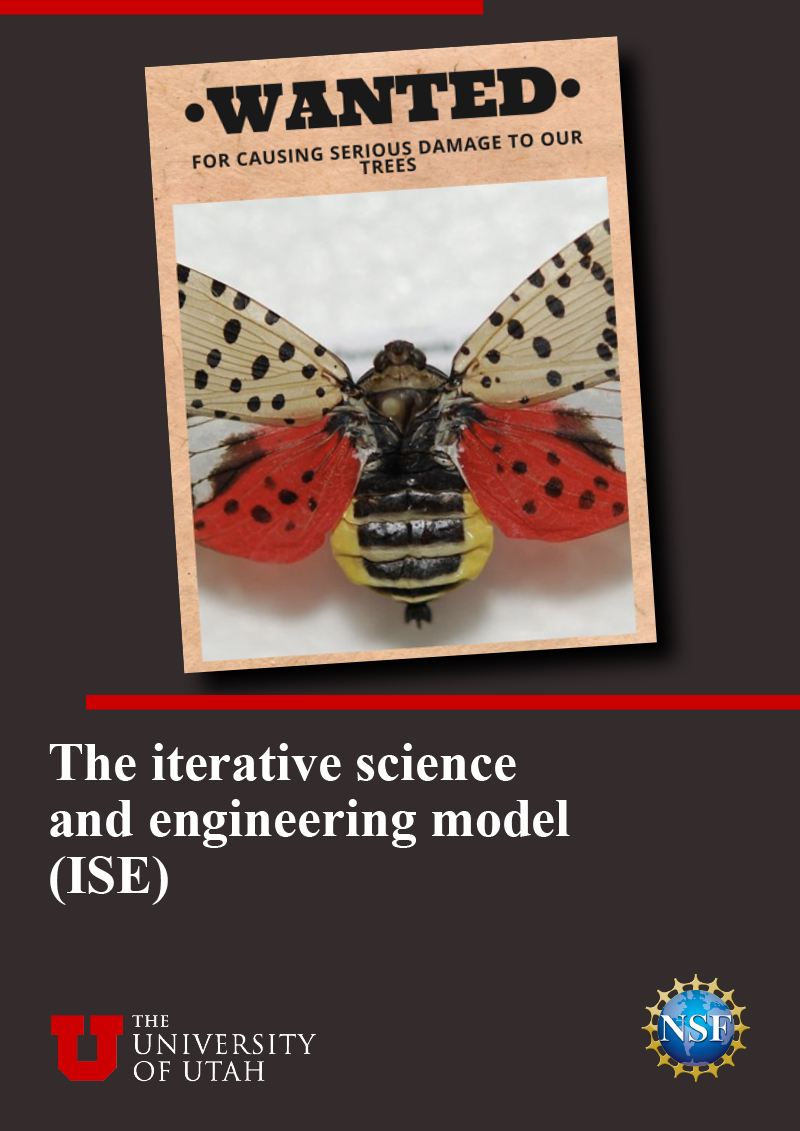Solving STEM challenges requires deep engagement with phenomena. Interdisciplinary STEM discoveries often advance through a fluid and messy process where scientists and engineers toggle between scientific investigation, problem generation, and engineering design to generate multiple solutions that are shared with and evaluated by others
Increasingly, our world presents us with complicated, interdisciplinary problems with foundations in Science, Technology, Engineering, and Mathematics (STEM). Whether we are developing a modification of a vaccine to challenge a virus variant, a sensor to monitor methane emissions on offensive garbage cans in urban areas, or a water filtration system to increase the availability of potable water, we need teams of problem solvers who can collectively develop solutions.
Recently, several organizations have expressed a need for pre-university instructional materials to provide opportunities for interdisciplinary science and engineering problem-solving (e.g., United Nations, 2023). For example, the vision document behind the United States’ Next Generation Science Standards (NRC, 2012) states that “the line between applied science and engineering is fuzzy. It is impossible to do engineering today without applying science in the process…this interplay of science and engineering makes it appropriate to place engineering and technology as part of the science framework at the K-12 level.
In this way, students can better see how science and engineering pertain to real world problems and explore opportunities to apply their scientific knowledge to engineering design problems once this linkage is made” (emphasis added by this author; NRC, 2012; p. 32). In summary, we need to provide opportunities for our youth, ages 10-18, to deepen their learning of interdisciplinary STEM through iterative cycles of science investigation and engineering design resulting in the creation of solutions.
In the United States, the Next Generation Science Standards have changed our expectations of how to teach science and engineering. The most notable change has been the shift from students learning science and engineering as disconnected ideas toward learning science content (disciplinary core ideas and crosscutting concepts) through the practices of science and engineering (NRC, 2012). Instructional programs that extend the learning of STEM topics through solutions challenge the science education status quo. Recent research studies provide evidence that pedagogical approaches that engage students in science investigations or engineering design lead to a deeper conceptual understanding of scientific phenomena. Specifically, instructional materials that guide students in asking and addressing questions, participating in discussion, critiquing multiple explanations, and recognizing multiple solutions lead to deeper conceptual understandings of scientific phenomena than traditional teaching methods (e.g., NASEM, 2019). Studies also demonstrate that the most salient factors impacting students’ continued persistence and success in STEM include promoting a sense of belonging and science identity (e.g., Calabrese Barton et al., 2021). Despite these research results and vision documents, instructional models and curricular programs that provide deep engagement with phenomena through science investigation and engineering design are virtually non-existent in pre-university classrooms.
This e-book describes an instructional model, Iterative Science and Engineering (ISE), that guides youth to deepen their learning of science content through the practices of both science and engineering. In addition, this e-book provides examples of activities and student work that illustrate our approach to learning interdisciplinary science content through investigation and engineering design.
What is the iterative science and engineering instructional model?
Over several years, we have developed the ISE instructional model, which uniquely interweaves phenomena-based science investigation with engineering design. ISE builds from a well-established instructional model called the BSCS 5Es (e.g., Bybee, 2009). The 5Es instructional model is based on the research-based learning cycles of Atkin and Karplus (1962) and is currently associated with more than 400,000 lesson plans. ISE expands on the 5Es to systematically provide science investigation and engineering design iterations, each of which informs the next, thus mirroring how professionals apply scientific and engineering knowledge seamlessly.
As shown in Table 1, activities in Iterative Science and Engineering are grounded in an interdisciplinary phenomenon introduced in the Engage phase. This is followed by two or three iterative cycles of Explore (e.g., data collection to use as evidence to understand the problem), Explain (e.g., data analysis and construction of arguments), and Engineer (define the problem, design, and build a solution).
The iteration between aspects of science investigation (Explore, Explain) and engineering design (Engineer, including design and testing) is essential to guide, build, and test the feasibility of the solution or prototype. In the final phase (Educate), students synthesize their process and present their solutions to peers or other stakeholders. Final student products include secondary students’ tested solutions and outcomes, including (1) the final design of a trap and a plan for capturing a local invasive insect, the Spotted Lanternfly, (2) data on effectiveness, and (3) educational videos shared with peers, scientists, local environmentalists and others.
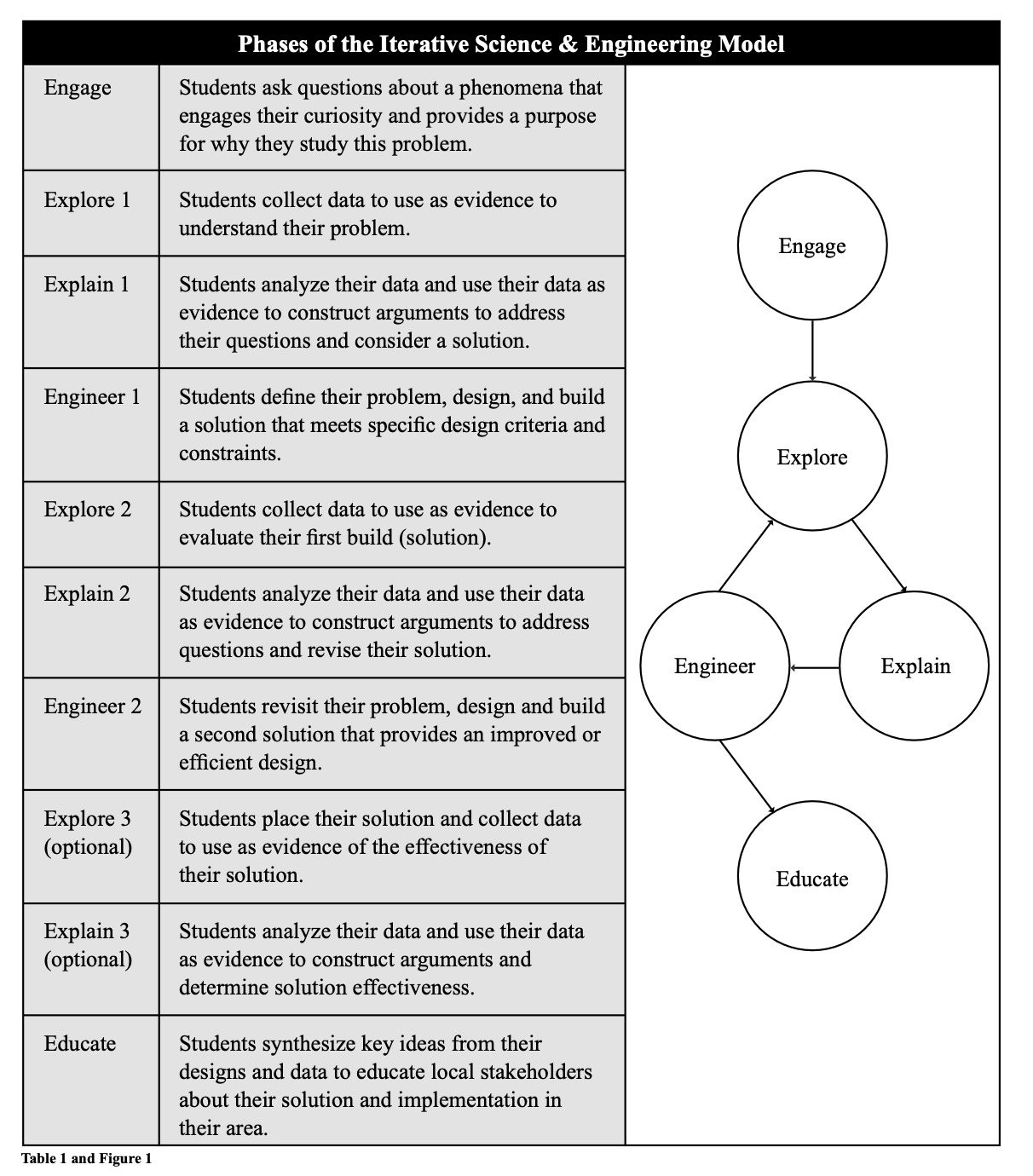
Examples of activities and student work
We provide examples of activities and student work generated from three rounds of implementation with youth ages 11-14. The curricular unit entitled, Life Right Here and Everywhere-Invasive Insects, consists of five weeks of field-based instructional activities, professional learning, and assessment materials focused on local invasive insects. The unit begins when students are given a meaningful context for learning through a Department of Agriculture invitation to study and design a trap to collect one local invasive insect, such as the Spotted Lanternfly or Japanese Beetle (Figure 2).
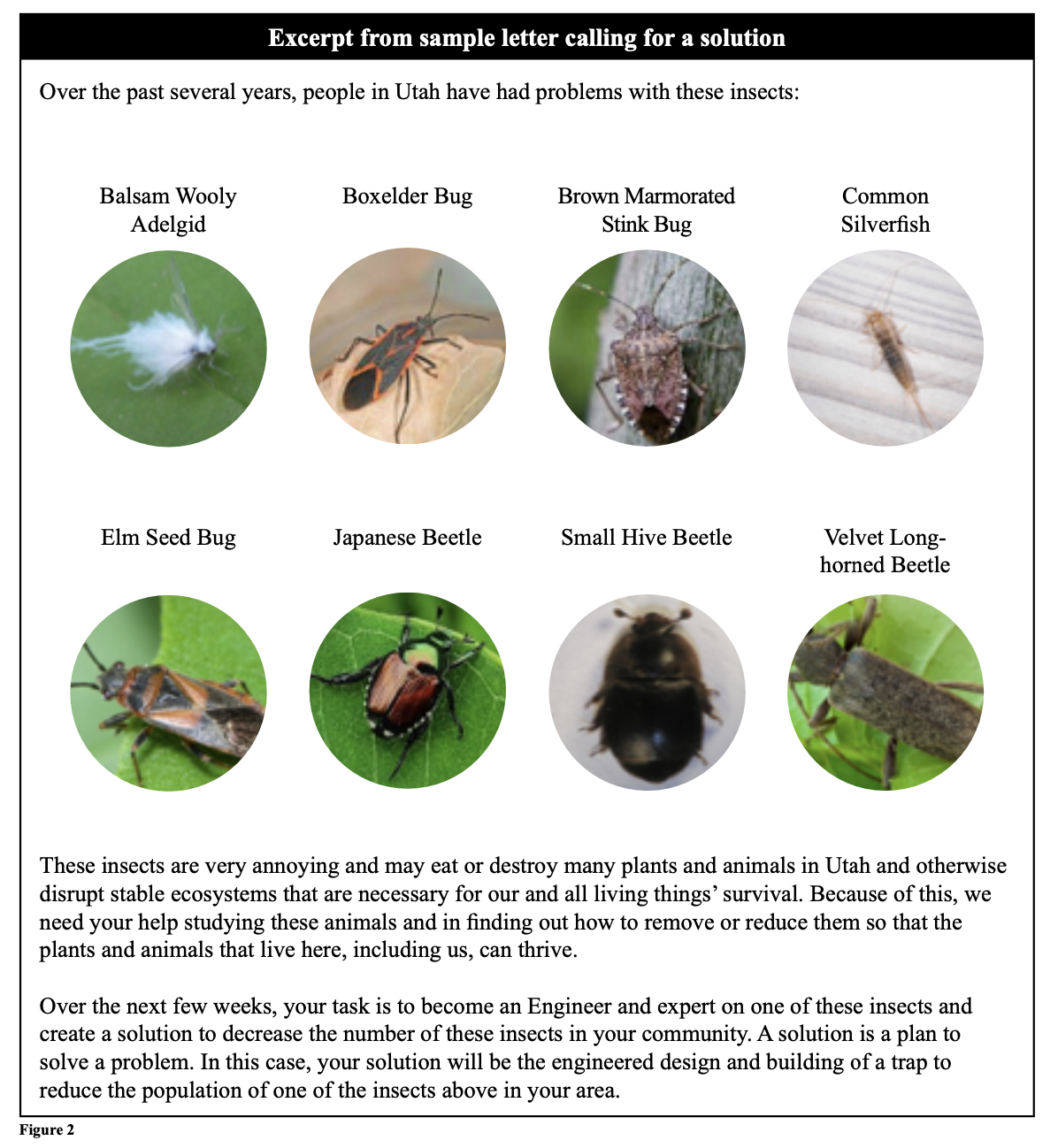
This activity is followed by the first Explore activity, where students collect data on local organisms in their neighborhoods using an online field guide called the Animal Diversity Web Pocket Guide (Figures 3 and 4). The ADW Pocket Guide contains over 6,300 species accounts and taxonomic keys to help youth identify and study local organisms in their region, particularly organisms invasive to the United States.
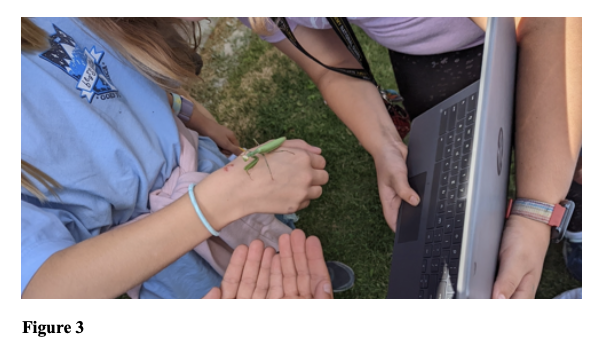
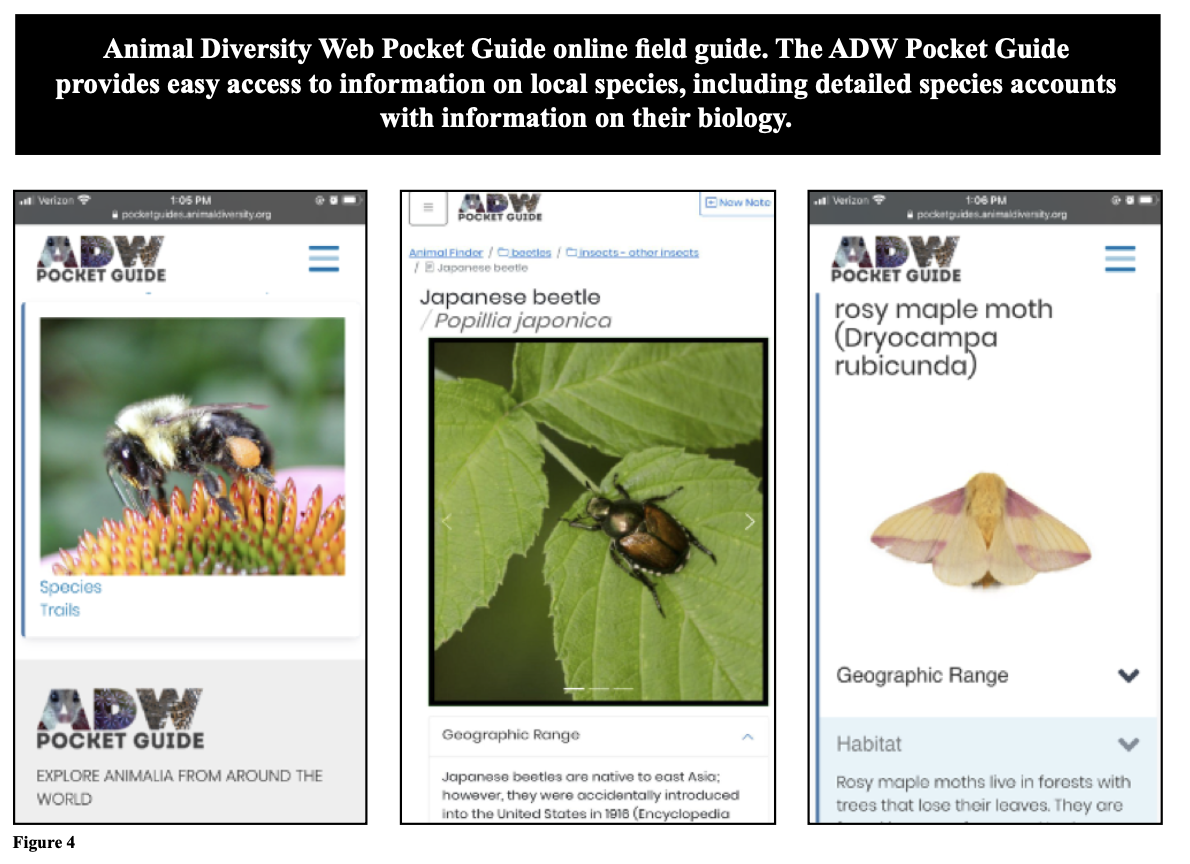
Data collection on local organisms is followed by the first Explain activity, where students expand on field studies through the study of ecological disruption through simulations, and they research the impact of one local insect on agriculture, ecosystem stability, and/or health (Figure 5).
In Engineer 1 and Engineer 2, students engage in two rounds of design and build of their solution (insect trap) to catch their local insect, culminating in placing the trap and analyzing results on effectiveness (Figures 6 and 7). The final activity is the Educate phase, where student teams educate others through presentations of their design, results, and suggestions for addressing the impact on local ecosystems.
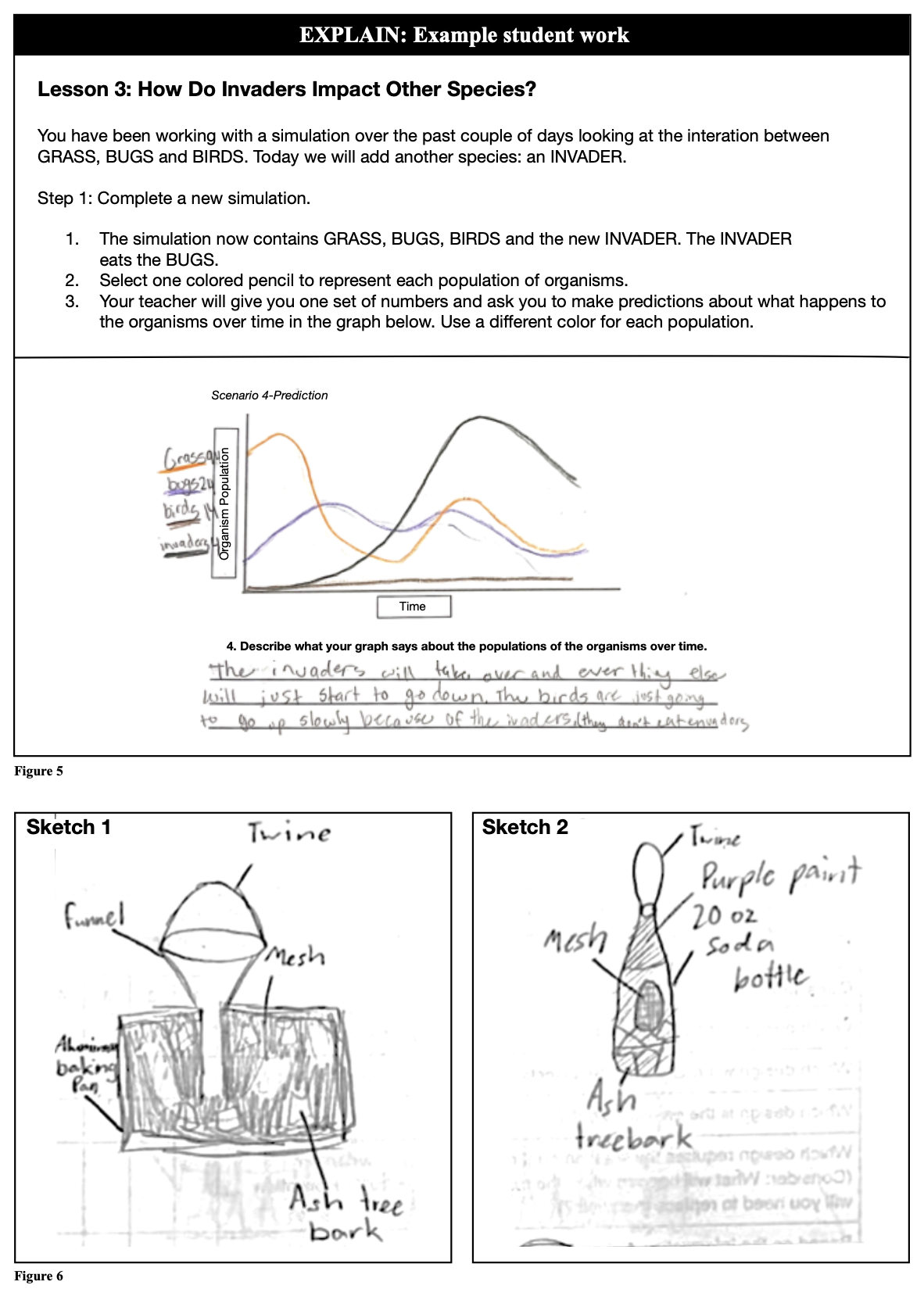
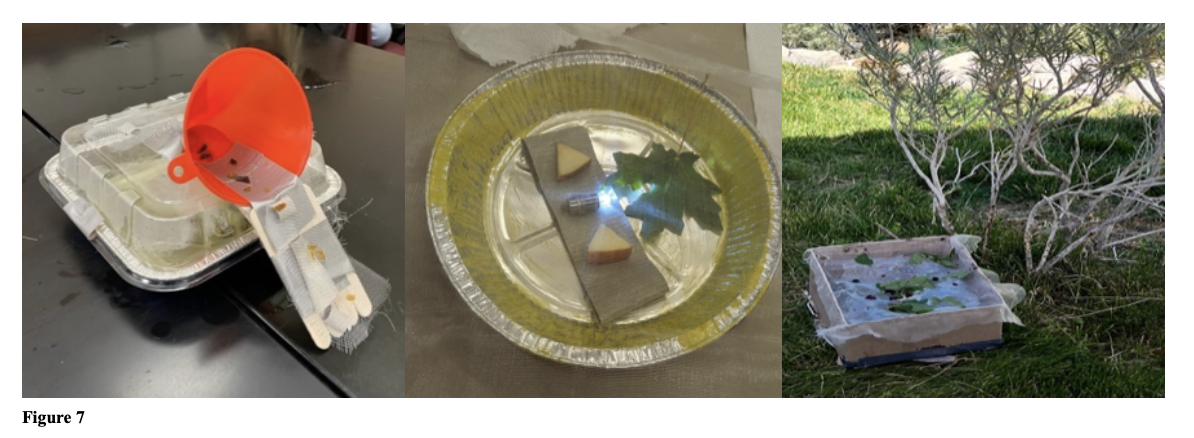
Research studies were conducted with 94 students and three teachers from three culturally, racially, and linguistically diverse schools. Results demonstrated that students achieved significant learning gains after involvement in the Iterative Science and Engineering curricular program (Songer and Ibarrola Recalde, 2021).
Conclusions
The world’s challenges are not simple, and the solutions needed to address these challenges require engineering design, creativity, testing, and practice. Such solutions also require thinking beyond traditional approaches and narrow boundaries of current science learning. Instructional models such as Iterative Science and Engineering guide students not just to examine interdisciplinary science concepts but to take action and use their knowledge to design interdisciplinary solutions. Such thinking is crucial for all our futures.
Notes
Life Right Here and Everywhere is funded by the National Science Foundation (2125844). If you are interested in learning more about the project please see our website, https://lrhe.utah.edu/


